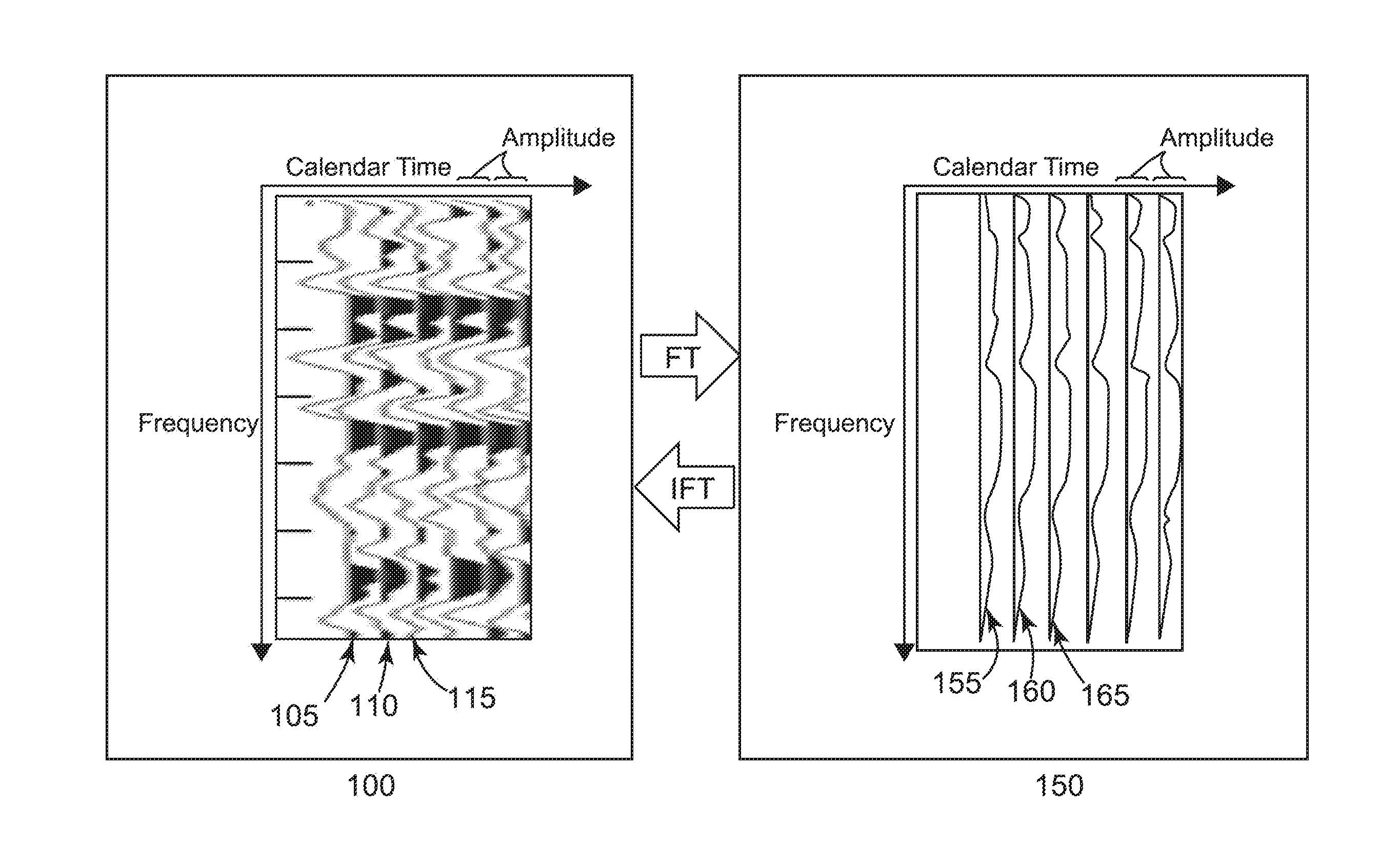Systems and methods to reduce noise in seismic data using a frequency dependent calendar filter
a technology of frequency dependent calendar and seismic data, applied in the field of seismic imaging, can solve the problems of reducing the accuracy of 4d images, reducing the accuracy of seismic traces, and reducing the noise of existing techniques for maximizing the signal-to-noise ratio in 4d images, so as to reduce the noise of input seismic trace data and reduce the noise of seismic traces
- Summary
- Abstract
- Description
- Claims
- Application Information
AI Technical Summary
Benefits of technology
Problems solved by technology
Method used
Image
Examples
Embodiment Construction
[0024]Embodiments of the present disclosure utilize a frequency dependent calendar filter to reduce noise in repeated seismic trace data. Controlled signals and uncontrolled signals are recorded and transmitted to a seismic data tool at intervals. Uncontrolled signals may be analyzed to determine a frequency content of the uncontrolled signals. This analysis of the frequency content of the uncontrolled signals can be performed using seismic trace input data itself and / or by using additional seismic data. Alternatively, the frequency content of the uncontrolled signals can simply be predicted based on a priori knowledge. Frequency content of the uncontrolled signals may be described with references to parameters such as component frequencies (“Fourier modes”) and associated amplitudes. Analysis of the frequency content of uncontrolled signals may be used to select or design a frequency dependent calendar filter for use in reducing noise in seismic traces. In some embodiments, a seism...
PUM
 Login to View More
Login to View More Abstract
Description
Claims
Application Information
 Login to View More
Login to View More - R&D Engineer
- R&D Manager
- IP Professional
- Industry Leading Data Capabilities
- Powerful AI technology
- Patent DNA Extraction
Browse by: Latest US Patents, China's latest patents, Technical Efficacy Thesaurus, Application Domain, Technology Topic, Popular Technical Reports.
© 2024 PatSnap. All rights reserved.Legal|Privacy policy|Modern Slavery Act Transparency Statement|Sitemap|About US| Contact US: help@patsnap.com










